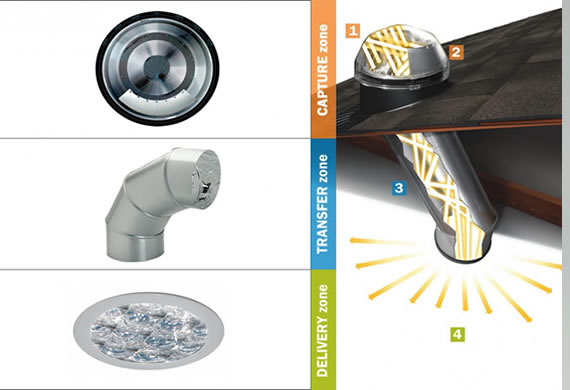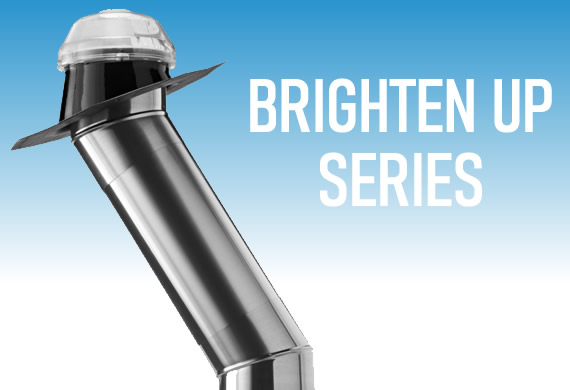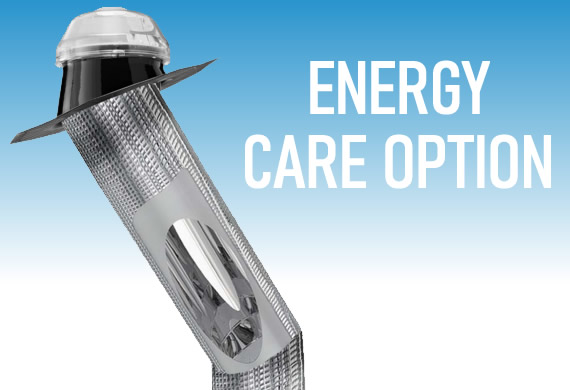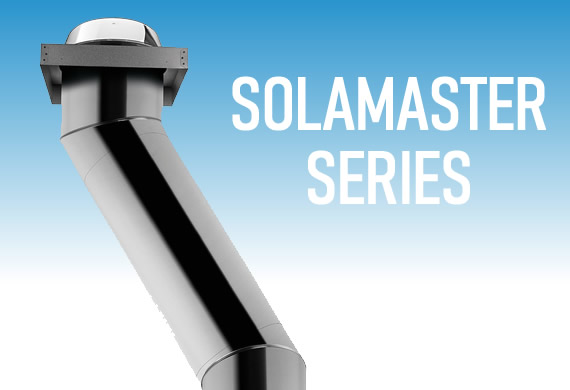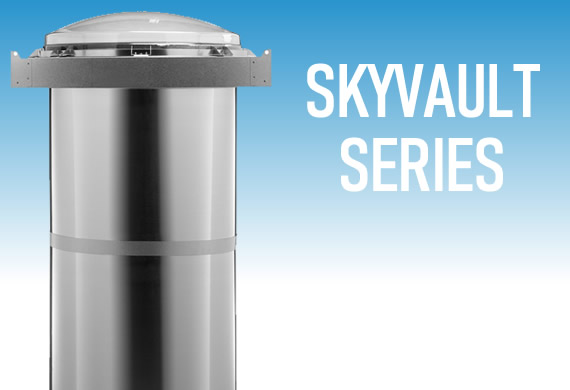
Solatube Vs roof windows
Let’s make one thing extremely clear from the start – I am not against roof windows. I think they are great and the primary benefit of a roof window is that you can see out of them (and you can also open them).
However, if a view is not going to be gained, then a Solatube tubular skylight is a very strong contender. In particular, where you have a conventional horizontal ceiling with roof space, or loft/attic above, then you will find that Velux roof windows, with attendant light wells beneath them to bring the light down to the room, are just not an effective or efficient way of lighting a room. A light well is essentially a timber framework running from the underside of the roof around the Velux window, down to the ceiling, which is then plaster-boarded, skimmed and decorated.
So in addition to the cost of the Velux window itself, there is also the material cost of each light well and most significantly the additional labour/time cost to complete this work.
A Solatube sun pipe, on the other hand, is designed specifically to pipe daylight down from the roof, through the roof space/attic and down in to the room below. They are simple and quick to install with the minimum amount of mess and upheaval, unlike a roof window and light well.
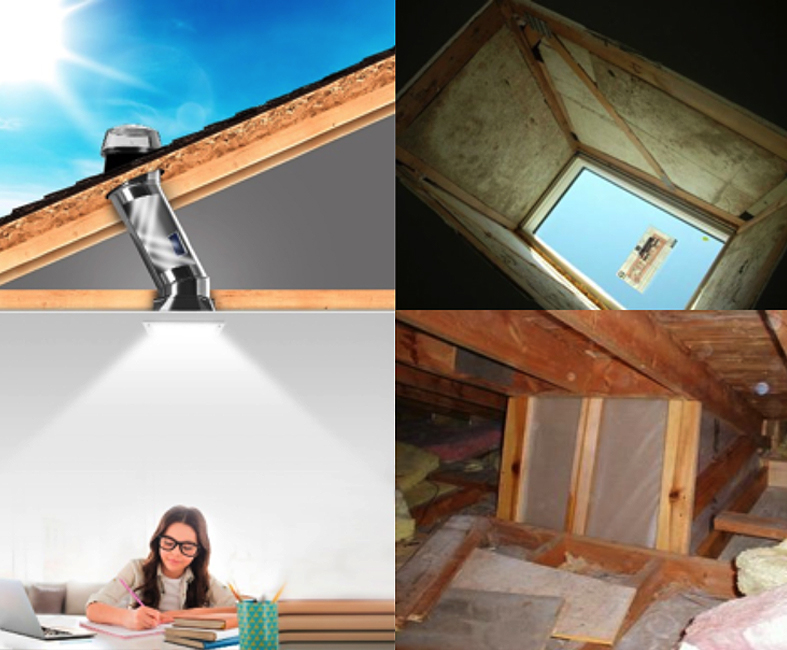
So, it’s not a case of liking one or the other, it’s simply a question of using the right product to do the best job. And here are the reasons why:
- The flat glass of a roof window is dependent on light shining directly down it, which it can’t do when the sun is lower in the sky during the winter months, and also in the mornings and evenings. A Solatube dome is designed to overcome this problem by capturing low level rays of light and diverting them down the tube. The dome also prevents direct rays of light creating reflections on screens and so forth, whilst also avoiding any noise when it rains, which can be a problem with roof windows.
- The white sides of a plastered light well are not designed to reflect light downwards and consequently most of the light is actually absorbed by the walls. The highly reflective coating of a Solatube ensures that practically all the light from outside is actually piped down and into the room below. To get as much light from a roof window and light well you will need a far bigger window (which may require additional cutting and bracing of roof timbers too) and hence you are creating a far less thermally efficient building, as this is somewhere where you will lose a lot of heat.
- A roof window with light well tends to leave a shaft or square of light in the room below as it is unable to diffuse or spread the light very well. A Solatube is, once again, designed to overcome this with the diffusers effectively spreading the light throughout the room, rather than concentrating it in a small patch on the floor.
But also consider the following points:
- The thermal efficiency of a roof window is poor compared to a Solatube. In winter you effectively have a large hole in your ceiling where heat will escape – whereas a Solatube, has good insulation properties and a u-value of 1.3, delivering the same amount of light but through a far smaller aperture, which is sealed at ceiling height.
- In summer a Velux style roof window is also likely to suffer from solar gain (heat build-up), which the well-insulated Solatube prevents.
- Condensation is likely to be an issue with roof lights, whereas a Solatube dissipates any condensation that may form, out on to the roof
- Light wells are a haven for cobwebs and spiders and will require frequent cleaning.
- Keeping roof windows clean from bird droppings, leaves and moss/algae can be difficult – both inside and out, due to access and attendant safety issues. Solatubes require no cleaning or maintenance.
- When it rains, roof windows can transmit a loud drumming noise in to the room below, which a Solatube does not.
- If security is a consideration, then a Solatube is a far safer bet than a roof window.
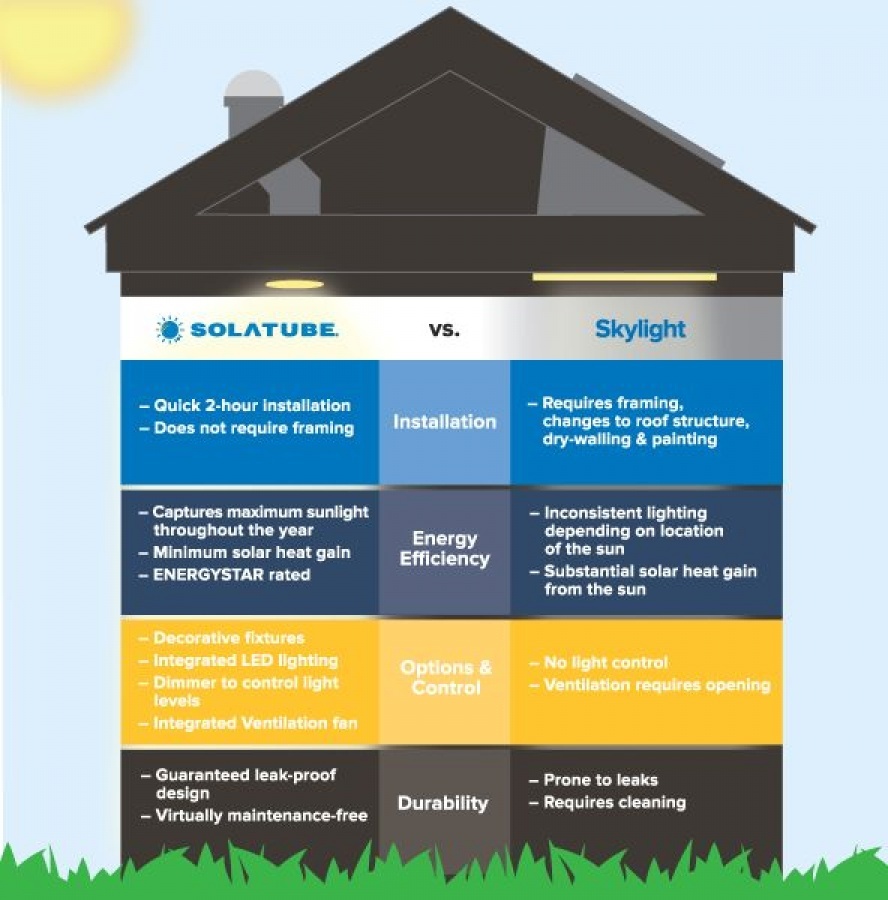
Ultimately, a smaller Solatube tubular skylight will deliver as much light as a Velux roof window and light well several times the size. Consequently, you can fit a smaller Solatube in between the rafters and deliver the same amount of light, and the roof timbers do not need to be cut and trimmed. A Velux style roof window will almost certainly require the cutting and strengthening of roof timbers prior to installation, which will add to the installation costs.
Do remember that if comparing with roof windows you also need to allow for the cost of the roof window and flashing kit, plus materials (plasterboard, plaster, paint, timber etc.) and a significant amount of extra time for building and then plastering and decorating the light wells. In comparison, a Solatube tubular skylight is simple, quick and easy to install, particularly when scheduled in with your roof build.
And don’t get misled by builders and architects who want you to install a Velux style roof window with a light well beneath it. In the vast majority of cases this ‘advice’ is based on a lack of knowledge and understanding of Solatube sun pipes and the fact that they are only familiar with and used to installing a roof window. So, just because it suits your builder/architect to install one doesn’t mean it’s actually the right decision for you, or the best way to get the most light in to your room in the most efficient way possible.
I hope all the above helps and If you are interested in bringing natural light into your home, why not contact us at info@solatubescotland.co.uk; 07778 283 427 to find out whether a Solatube sun pipe can help you. Typically, a fully installed system might cost anywhere between £900 – £1,200; that’s supplied, professionally installed and includes the VAT.

